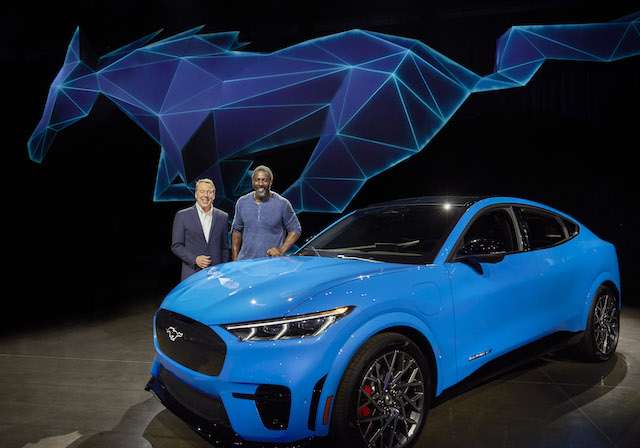Rolls-Royce Unveils Its Aircraft Which They Are Building to Be the World's Fastest All-Electric Plane
Rolls Royce is aiming to deploy its ACCEL plane in the spring so that it can prove itself to be the world's fastest all-electric plane.

For decades, the words "Ford Mustang" have conjured up images of one of America's most iconic muscle cars.
While you might think of the Fastback, the Shelby, the Cobra, or the GT500 as some of the most prolific sons of the Detroit motoring giant, the next generation may picture something completely different.
Enter the Ford Mustang Mach-E: a Mustang SUV that is entirely electric.
Be warned—this is NOT your father's Mustang. Between boasting an emission-free 0 to 60 time of 3.5 seconds on the GT model, a targeted EPA-estimated range of at least 300 miles, and a crossover design with trunk space both in the back and under the hood of the car, it's a far cry from the rear-wheel drive V8 bellowers of decades past.
The high-tech doesn't stop there, either; the Mach-E features handle-less, latch-less doors that sense when you are near and illuminate a button that will allow you to enter the vehicle.
However, what is undoubtedly the most interesting aspect of the Mach-E is the fact that this will be the first entirely electric version of one of the most successful sports cars in history—and while even modern descendants of its gas-guzzling predecessors can manage as little as 19 miles per gallon (9 kpl), a brand new Mach-E with the extended-range 98.9 kilowatt hour battery pack requires half the energy to travel just as far.
For decades, the idea of what a sports car is and should be has been different depending on which side of the Atlantic Ocean you found yourself. However, as the methods of modern automotive engineering advance, more and more manufacturers are moving towards electric vehicles. Mercedes, Porsche, Audi, Jaguar, and other luxury brands have all released electric models.

The advantage Ford has gained from waiting this long to turn their iconic "pony" into a battery-powered beast is that the advancements made in battery-powered automotive technology have developed much further since the release of the first Toyota Prius.
For example, while electric cars in the first decade of the new millennium became famous for taking whole days and nights to fully charge, the Mach-E can charge up to 47 miles in just ten minutes at a charging station. In your garage, this can fall to around 22 miles per hour of charge, which is pretty standard for electric vehicles.
Starting at $43,000 for the base model and climbing to $60,000 for the GT and First Edition models, the Mach-E represents a significantly more affordable bill of entry for those looking for an electric SUV. The Tesla SUV released last year requires at least $80,000, with the electric Porsche Cayenne coming in at not much less. The Volvo XC40 costs a few thousand less, but doesn't equal the power and torque of the Mach-E.

The 6 versions of the Mach-E will be released in a trickle, with two coming at the end of 2020, two more following in early 2021, and the final two in the spring. This early public release and prolonged deployment will allow Ford plenty of time to adjust to concerns and feedback from testers.
Will the 2021 Ford Mustang Mach-E be the bedroom wall pinup poster car of Generation Z? As battery power catches up to petrol in both convenience and performance there's a chance that if they ever remake Bullet, Steve McQueen will be driving a Mach-E rather than a Fastback.
Drive The Good News Over To Your Friends By Sharing This To Social Media…
Be the first to comment